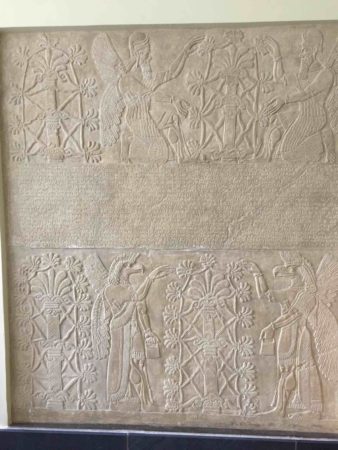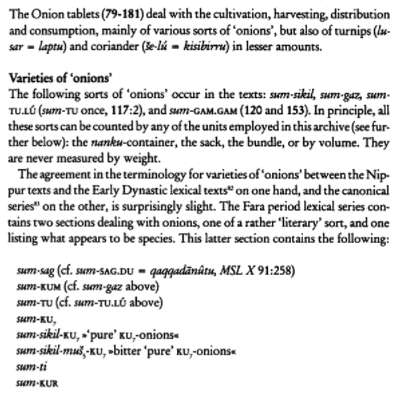- Cannabis Domestication, Breeding History, Present-day Genetic Diversity, and Future Prospects. The weed is in trouble, man. Just one of the papers in a very special issue of Critical Reviews in Plant Sciences. And for a historical perspective…
- Genomic analyses of primitive, wild and cultivated citrus provide insights into asexual reproduction. Apomixis is down to a “miniature inverted-repeat transposable element insertion in the promoter region of CitRWP.”
- Automated cropland mapping of continental Africa using Google Earth Engine cloud computing. Croplands increased by 1 Mha/yr between 2003 and 2014.
- Genetic diversity and population structure of native maize populations in Latin America and the Caribbean. Three groups: Mexico + southern S. America, lowland Mesoamerica + Caribbean, Andes.
- Phylogeography of the wild and cultivated stimulant plant qat (Catha edulis, Celastraceae) in areas of historical cultivation. Centres of origin in Kenya and Ethiopia, with limited movement between the two, but some hybrids in N. Kenya; the Yemeni stuff came from Ethiopia.
- Process-based modelling shows how climate and demography shape language diversity. If you assume human groups split after reaching a certain population size, and rainfall limits population density, you can predict language diversity in Australia.
- Volatile Compound Profiles of Malus baccata and Malus prunifolia Wild Apple Fruit. Look at the esters.
- Genetic diversity, population structure and association analysis in coconut (Cocos nucifera L.) germplasm using SSR markers. I can’t see much new here. Please, coconut experts, tell me what I’m missing.
- Opportunities for Napier Grass (Pennisetum purpureum) Improvement Using Molecular Genetics. Could do better.
- Heterogeneity as the Basis for Rangeland Management. Gotta mix it up.
- Analysis of genetic diversity of Chinese dairy goats via microsatellite markers. The locally developed breeds are all derived from a single European breed.
- Variation in bean morphology and biochemical composition measured in different genetic groups of arabica coffee (Coffea arabica L.). You can’t use morphology to predict taste.
- Breeding for the improvement of indigenous chickens of Bangladesh: evaluation of performance of first generation of indigenous chicken. I don’t understand this much, but I liked the names of the genotypes: Naked Neck, Hilly and Non-descript Desi.
- Persistence of endophytic fungi in cultivars of Lolium perenne grown from seeds stored for 22 years. It’s a record!
Assyria in Gatersleben
I’m not sure if I said here that I visited IPK, the German national genebank, a few weeks ago. I did on Instagram.
Great facilities, great people, great work: but, though bigger and better resourced than average, in most ways like many other genebanks around the world. Except, that is, for the Assyrian relief in the entrance hall.

Well, the plaster cast of the Assyrian relief anyway. Nobody seemed to know where the original was, but there was general agreement that the copy was there because it depicted plant breeding. Of course, I took that as a challenge, and after a few minutes playing around with Google’s image search feature, I ran it to earth at the Met.
Each register of imagery shows a pair of supernatural figures flanking a stylized “sacred tree.” Further sacred trees can be seen to the left, and similar imagery continued around the room from which this slab came. The tree is thought to represent the prosperity and agricultural abundance of Assyria, and perhaps on one level the state itself. The supernatural figures are protective, and similar to those shown at larger scale throughout the palace. The gesture performed by the bird-headed figures with bucket and cone has been much discussed. One suggestion is that it symbolizes the fertilization of the land through the imagery of artificial date-palm fertilization, in which male date-spathes are used to fertilize female plants. The Assyrian term for the cone, however, seems to be “purifier,” and it is therefore likely that the symbolism has as much or more to do with magical protection.
So, maybe plant breeding, maybe not, but well worth having in the entrance lobby to a plant breeding institute containing a genebank.
But in locating the stela I ran across an article on Mesopotamian agriculture from the Oriental Institute that mentioned something called the Philadelphia Onion Archive.
No way to let that go either, naturally. It turns out that the Philadelphia Onion Archive really does consist of an archive of material on onions, kept in Philadelphia in the unwieldy shape of numerous clay tablets inscribed in cuneiform in the Akkadian language. Fortunately, there’s a translation online. Which means we know how many types of onions were grown during the reign of King Shar-Kali-Sharri, over 4,000 years ago.

And for how many places around the world can we say that even now?
Brainfood: Dope diversity, Potato chips, Conservation costing, Island breeding systems, Indus civilization cereals, Drone phenotyping, Wild rice in Asia, Wild rice & Native Americans, Pearl millet temperature, Climate change & fruit/veg
- Cannabis Domestication, Breeding History, Present-day Genetic Diversity, and Future Prospects. The traditional landraces are being contaminated and need urgent collection and evaluation by dedicated professionals.
- Cold sweetening diversity in Andean potato germplasm from Argentina. 5 out of 48 Andigena landraces make good chips.
- Considering cost alongside the effectiveness of management in evidence-based conservation: A systematic reporting protocol. Here comes the metadata. No excuse now.
- Self-compatibility is over-represented on islands. 66% vs 41% in Asteraceae, Brassicaceae and Solanaceae. Any crop wild relatives in the list?
- Cereals, calories and change: exploring approaches to quantification in Indus archaeobotany. Millet may not have been as important as is generally thought.
- High-Throughput Phenotyping of Sorghum Plant Height Using an Unmanned Aerial Vehicle and Its Application to Genomic Prediction Modeling. A near-infrared, green and blue (NIR-GB) camera on a drone gives pretty good results compared to a person with a tape measure, and is much more fun.
- Asian wild rice is a hybrid swarm with extensive gene flow and feralization from domesticated rice. No such thing as completely wild Asian rice.
- The dispute over wild rice: an investigation of treaty agreements and Ojibwe food sovereignty. Not wild rice at all, but what’s been happening to it might be a violation of the White Pine Treaty with the Ojibwe.
- Quantifying pearl millet response to high temperature stress: thresholds, sensitive stages, genetic variability and relative sensitivity of pollen and pistil. The problem is the pistils.
- Effect of environmental change on yield and quality of fruits and vegetables: two systematic reviews and projections of possible health effects. Bad for yield, good for nutritional quality.
Nibbles: ICARDA genebank, Mexican honeys, NWFP news, Schisandra, Swimming camels, Barley genome, Silly video, Tasty breeders, Tall maize, Praying for the prairie, Rosaceous breeding, Millet fair, Sesame entrepreneurs, European AnGR, Thai gardens, Apple resistance, Native Californians
- Latest on the ICARDA genebank from the author of The Profit of the Earth.
- Honey diversity in Mexico.
- Speaking of which, did we already point to the new, improved Non-wood Forest Products Newsletter?
- The schisandra berry is apparently helping save the panda. Yeah, I never heard of it either, but more power to its elbow.
- Make your day better by looking at pictures of aquatic camels.
- Oh, here we go, cue the endless stream of stories about how genomics will save beer.
- “In the last century, 94% of the world’s seed varieties have disappeared.” No, they bloody haven’t. Only linking to this for completeness.
- Breeders get into flavour. Because celebrity chefs.
- That’s one tall maize plant. No, but really tall.
- The Great Plains are in Great Trouble: “Hundreds of species call the prairie home… A cornfield, on the other hand, is a field of corn.”
- A project dedicated to the genetic improvement of US rosaceous crops. Love that word. Rosaceous.
- Eat those millets!
- Sesame opens doors in Tanzania. See what I did there?
- Interview on conserving Europe’s livestock diversity.
- WorldVeg empowers women through gardening. I know how they feel. Well, kinda.
- Want a Forbidden Apple? You know you do. #resist
- “Accustomed to seeing crops planted in straight rows featuring one or a few different varieties, Muir and his European predecessors were not prepared to recognize this subtler form of horticulture. And so they viewed California Indians as lazily gathering the fat of a landscape they had hardly touched.”
Nibbles: Treaty & UPOV, Minor millets redux, Maize replacement, Amaranth et al., Squash story squashed, Potato podcast, Food security webinar, Plants Day, Repast magazine, German beer, Coffee strategy, ILRI genebank
- The ITPGRFA and UPOV need to sort out their connection.
- Bring back our millets.
- And our sorghum and pigeonpeas too.
- And the milpa.
- And speaking of milpa crops, the real story of that large, old squash.
- Since we’re at it, bring back the potato too. To the people.
- Yet another interesting webinar which I missed. Wonder whether they talked about the above. Anyone?
- Still have time to prepare for “Fascination of Plants Day” on 18 May 2017, though.
- Repast: “the First-Ever Food History Magazine”. ‘Nuff said.
- Gotta love those German purity laws.
- A strategy for conserving coffee genetic resources takes shape. Now for the money…
- New forages genebank opens at ILRI in Ethiopia.